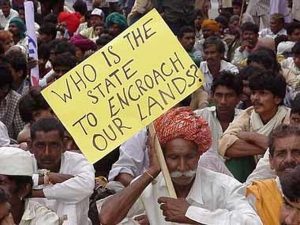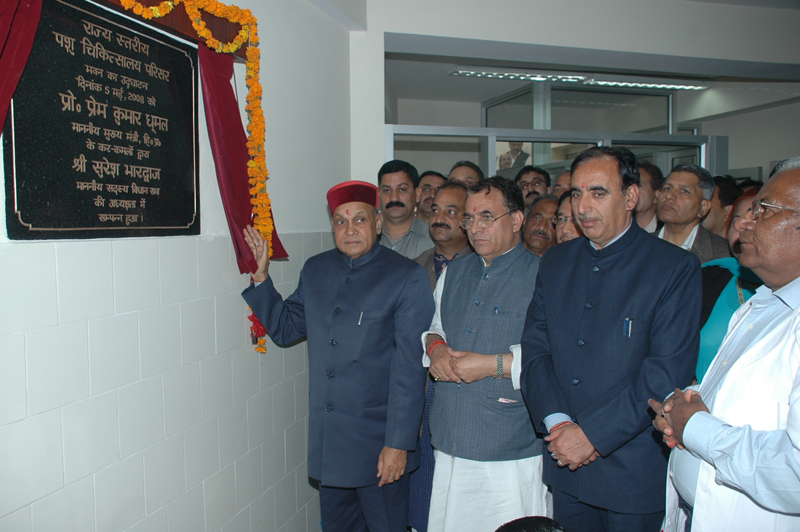Allocation of immense capital firstly to secure agriculture, thereafter manufacturing and finally trade. This pragmatic path to economic progression is plainly elucidated by the visionary Adam Smith in his revolutionary work ‘Wealth of Nations’. A simple fiscal approach if followed, it has the potential to give the country massive dividends. Sadly, this uncomplicated explanation is missing from the public discourse surrounding Land Acquisition, an inevitable essentiality for ensuring development as well as growth in income and living standards.

Agriculture being the primary sector of a country serves as the backbone of every economy. Sheltering this segment is no doubt a crucial task, as its stability serves as a base for future industrialization. Studying the developmental path, which our country has followed since independence, it is unmistakably evident that the first three decades till the early 1980s were dedicated towards the improvement of farming techniques as well as welfare of farmers.
To create a stable and equal agricultural sector the central and state governments zealously executed land reforms. Fighting a rough battle while undertaking these reforms, the legislature ultimately prevailed when it passed the Constitution (44th Amendment) Act, 1978. The alteration in the constitution repealed the Fundamental Right to Property and made it easier to accomplish much needed land reforms.
At a time when untangling the sector which feeds our stomach was indispensable, the legislature lived up to the expectations and ensured that reformist legislations were passed irrespective of any opposition. The circumstances surrounding our political economy have changed drastically since then. The call of the people as resonated by the mandate given to the present government is that of economic progress and expansion.
Critical to that is the success of Make in India, a policy initiated to herald the country into the age of large scale manufacturing. Ease in availability of land in turn is essential to get the program up and running. By blocking the amendments proposed by the government to the highly impractical Land Acquisition, Rehabilitation and Resettlement Act, 2013 the opposition is not only betraying our countrymen, it is also ridiculing the will of the people vested in the incumbent.
The major points of contention between the opposition and the government are hovering around the omission of consent clause as well as the provisions dealing with social impact assessment. The consent requirements are contained under Section 2(2) and the social impact assessment directives have been mentioned in Sections 4-9 of the 2013 Act. The government is hell bent on removing these absurdities, but the opposition led by congress which passed the 2013 act is unwilling to budge.
A profound reading of the sections while keeping in mind the realities of rural India illustrates the unfeasibility of these provisions. Section 2(2) lays down that consent of 70 per cent in case of PPP projects and consent of 80 per cent in exclusively private projects is required from the affected families before commencement of acquisition proceedings.
As far as applicability of consent is concerned it has been envisaged that the same will be undertaken along with the Social Impact Assessment (SIA) under Sections 4-9. It is revealed by the act that the SIA under section 4 shall ascertain the pros and cons of the purpose for which the land is proposed to be acquired.
At first glance, it all seems hunky dory, but the problem is buried deep in the heart of these sections. Both consent and social impact assessment are to be undertaken in consultation with a body called the Gram Sabha. The organisation of Gram Sabha appears repeatedly in the text of these sections and is at the heart of their implementation. The predicament which arises in practically enforcing these directives of the 2013 act is simple.
The term Gram Sabha has never been defined in the act as well as any other law applicable throughout the country. According it a legal meaning is also next to impossible. To a person familiar with life in rural India, Gram Sabha symbolises only the meeting of all individuals who are understood to be a part of the village. It is inconceivable to define all the constituents of a village in India and preposterous to expect to achieve consent percentages exceeding 70 per cent from a body whose members are not clearly identifiable.
Another bewildering part of social impact assessment envisioned under the Act of 2013 is Section 7. Under this section the Social Impact Assessment report prepared in consultation with the Gram Sabha, Panchayat and relevant Municipal Bodies shall be appraised by an expert group which will comprise of two non official scientists, a technical expert along with members of the Panchayat, Gram Sabha, Municipality or Municipal Corporation as the case may be. Supplementing the nuisance of this bureaucratic fossil is Section 14 which says that if preliminary notification under section 11 is not issued within 12 months from the date of appraisal, entire proceedings vested under the provisions of Social Impact Assessment shall be conducted again.
It is apparent that the above provisions invent an entirely new form of red-tapism. The only beneficiaries of this system will be the left of centre NGOs who are keen to fill the space of two non official scientists and technical experts in hundreds of such expert appraisal groups throughout the country.
The 2013 act which is a remnant of the license raj is the centre of deliberation in an era where community debates must focus on deregulation of the humongous bureaucracy. While the Government and the opposition have embattled themselves in a never ending war surrounding these two aspects of the law, we are ignoring other sections which also need immediate amendment.
Adding to the officialdom that the act creates are Sections 48 and 51, which provide for the establishment of a National Monitoring Committee for Rehabilitation and Resettlement and Land Acquisition, Rehabilitation and Resettlement Authority. The logic behind these two sections is also bizarre as the functions which these two bodies aim to perform can and for times immemorial have been performed by the revenue authorities of the state led by the collector.
It is sad to see the opposition parties led by the congress portray the bill proposing amendment to the 2013 Act as anti farmer and pro capitalists. They are desperately trying to blur the government’s vision, which imagines a prosperous India for all by pitting two equally important sections of our polity against each other.
Legislators must rise above petty power struggles and rally behind the passage of the amendment. It is time to show the same political maturity as our predecessors did on the issue of land reforms. Political outfits must iron out differences and pass the amended legislation to kick start our much delayed industrialization which shall benefit farmers and entrepreneurs without any discrimination. One act of statesmanship by our parliamentarians stands to forgive thousand actions as turncoats.
Rohan Shridhar is a law graduate and legal activist from the state of Himachal Pradesh



